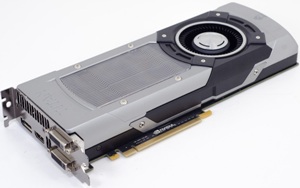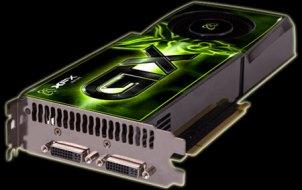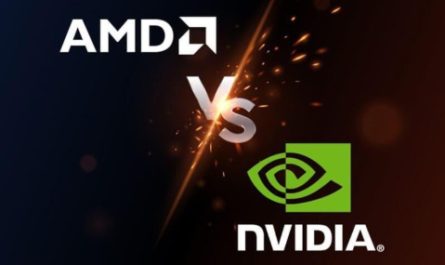Gaming computers have come a long way since the days of the Commodore 64. Modern gaming computers are fast, powerful, stylish and silent. Modern technology has even created portable and powerful gaming laptops; these laptops run circles around the cutting-edge desktops from just a few years ago. Virtually every piece of hardware in the modern gaming computer has evolved considerably over the past few years. Here’s a brief outline of the major advances that power today’s gaming computers.
Power Supplies
Power supplies are often overlooked, but they have come far since the early days of computers. The extreme power demands of gaming computers have driven the development of more powerful power supplies. In the early ’90s and 2000s, most power supplies could provide between 350-500 watts of power, which was sufficient for the machines of the time. Modern power supplies may provide 800 watts or more of power to drive power-hungry multi-core processors, video cards, multiple hard drives, and other demanding components. Modular cable-management systems are another advanced component of modern power supplies. These systems allow users to only use the cables that they need, making wiring easier and reducing in-case clutter. This reduced clutter also provides better air flow for cooling the computer’s various elements.
Cases
Cases are no longer the boring beige boxes that characterized computers in the ’90s. Modern cases are spacious and multicolored; these cases often feature aggressive styling and clear acrylic viewing panels. Many cases have easily removable side panels and copious expansion bays in the front. Most also include easily accessible front ports, such as USB ports and headphone jacks. Modern gaming cases include many fan mounts, allowing users to install extra fans to help keep their high-performance machines cool. Additionally, most gaming cases include a removable motherboard tray, allowing gamers to work on the guts of the system without having to work in the cramped interior of a computer case.
Cooling Systems
Early cooling systems were little more than one or two fans blowing air across the innards of the computer. Modern cooling systems include 120mm variable-speed fans, fan mounts and exhaust ports spaced on every side of the computer and more. Extreme overclockers go a step further and build their gaming computers with liquid cooling systems. Rather than using fans, these systems run pipes filled with cool liquid around every heat-producing component in the computer. These systems even include a miniature radiator and pump to keep the liquid cool and circulating through the computer.
Media Drives
Floppy drives, once a mainstay of computers, are rarely used anymore; even CD-ROM drives are a rarity. Modern gaming computers and gaming laptops typically include at least a DVD drive. Many computers feature DVD burner instead of a simple player, allowing users to back up files on spacious DVDs. Some of the newest computers even include Blu-ray drives.
Modems and Networking
Dial-up 56k modems were once the standard for online connectivity. If gamers wanted to play together, they had to bring their computers to the same location and physically network them together. Even then, not every computer was capable of networking with other computers. Most modern gaming computers feature built-in network capability; few computers need a dedicated network card anymore. Modems have now become external devices, feeding computers with connections hundreds of times faster than the old dial-up connections were. Many networks don’t even need wires any longer; wireless networking has become commonplace.
Permanent Storage
Hard drives are now gargantuan compared to their early predecessors. Modern gaming computers feature hard drives measured in the hundreds of gigabytes; some hard drives even reach into the terabytes. Hard drives have done more than get larger, however. Solid-state drives have recently been introduced. Because these drives have no moving parts, writes Melissa J. Perenson of PCWorld, “[They] tend to be more rugged than a standard hard drive… also, unlike standard hard drives; [solid-state drives] don’t generate heat.”
RAM
RAM has gotten faster and larger over the past few years. Modern gaming computers feature RAM banks that are larger than the hard drives of older computers; most gaming computers contain between four to 32 gigabytes of RAM. In addition, the development of DDR RAM has made these memory modules faster as well as larger.
Video Card
Modern video cards are incredibly powerful. These video cards contain their own dedicated graphics processors, cooling units, and video memory. The video cards in modern gaming computers contain more processing power and dynamic memory than most older computers did. Modern video cards can produce nearly photo-realistic images in real-time. In addition, these powerful cards are even capable of linking together using a technology called Scalable Link Interface, or SLI. This technology allows users to use two video cards as one, yielding impressive performance boosts.
CPU
Central Processing Units, or CPUs, are the heart of every computer. Modern CPUs bear little resemblance to their older cousins. In the past, CPUs only got faster as time went along; improvements in performance were thanks in large part to simple brute force. However, modern CPUs have added a new trick to the game: multicore processors. Multicore processors use the power of modern manufacturing techniques to effectively squeeze multiple CPUs onto the same chip. Many computers feature quad-core processors, allowing the CPU to work on four tasks simultaneously without losing any processing power. In addition, each of these four cores operates at blazing fast speeds; some processors are capable of performing more than three billion operations per second.
Laptops
Modern computing equipment has not become any larger while becoming more powerful. In fact, modern computer parts are even smaller than they used to be. This has allowed computer manufacturers to produce powerful gaming laptops. Thanks to advances in cooling systems and miniaturization, users of these portable powerhouses don’t have to sacrifice performance for portability. Modern video screen technology also allows these systems to offer crisp multimedia performance.


